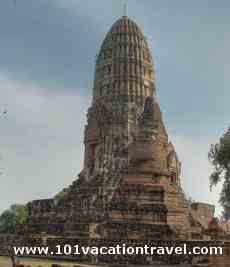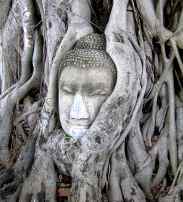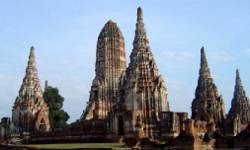Vacation guide to Ayutthaya, Thailand

Ayutthaya, once the capital of Thailand (which was known as Siam by then), was the central of economic development and central of power in the region. The Ayutthayan kingdom has a history of around 400 years since 1350, and had trading and diplomatic link with Holland, England and France. In 1767, Ayutthaya was ghastly abandoned. It was sacked by Burmese army who razed the city to ground, killed and carried off 90,000 lives from the capital. Nonetheless, within 7 months, the Siamese, under the leadership of King Taksin successfully ejected the Burmese from their country. However, Ayutthaya was not rebuilt, and the Siamese has since settled in Bangkok as the new capital, approximately 76 km in distance.
Today, Ayutthaya is the historical city in Thailand which has buildings with 250 years of history that survives from the invasion. These ruins are mainly sacred buildings, many containing remaining of giant Buddha statue, chedi and prangs.
Ayutthaya, an ancient capital city with complex and colorful historical and cultural history, offers a totally different aspect of what modern metropolitan city of Bangkok offers. At only 75 miles from Bangkok, it’s worth a trip to visit this ancient capital, admiring the beautiful prangs and stupas, and enjoying a leisure day of vacation in this city.
 Wat Mahathat
Wat Mahathat
A temple complex which can be dated to 1374 that contain a curious relic, a giant Buddha head engulfed and framed within a trunk of a giant bodhi tree. This is the most famous tree in all of Thailand. Ironically, row of headless Buddha can also be seen at the Wat.
Wat Ratchaburana incorporates a prang that allow the visitors to reminisence the story of the Ayuthayan kingdom. In 1420, King Intharacha died and his two elder sons fought for the crown but both died in the duel. The younger brother, who then became King Boron built Wat Ratchaburana in 1424. The Prang keep the former King remains and the nearby chedi keeps the ashes of the two brothers. Despite treasures and prize possessions deposited in the prang, it was not penetrated by the Burmese, but being stolen by tomb robber in 1957. The partially recovered treasure are now displayed in nearby Chao Sam Phraya National Museum.
The most notable item in Chao Sam Phraya National Museum would be the recovered treasure from Wat Ratchaburana. The royal sword, sheets of gold inscribed with Buddhist texts, gold ornaments such as golden elephant. There are 3 exhibition halls in the museum.
 Wat Chaiwatthanaram
Wat Chaiwatthanaram
A Budhhist temple built by King Prasat Thong in 1630. The architecture designed is greatly influenced by khmer culture (Cambodia). It is consisted by a major Prang, surrounded by four smaller Prang at four corners. This temple is a major tourist attraction in Ayutthaya.
Grand Palace, also known as Ancient Palace, is the home to the every king during the Ayutthayan Kingdom. The ruins of Ayutthaya is classified as UNESCO World Heritage Site.